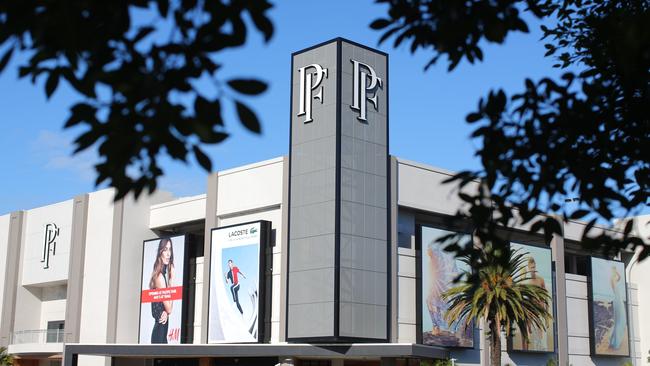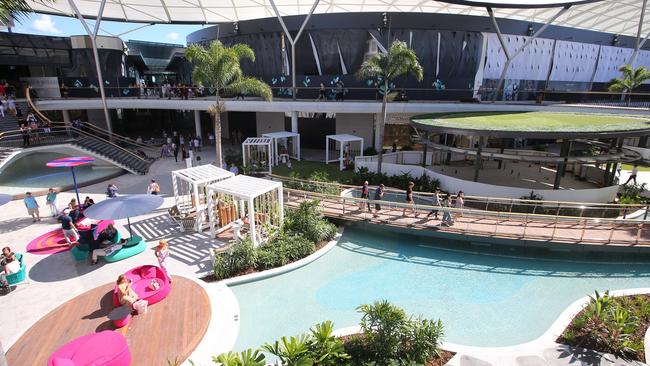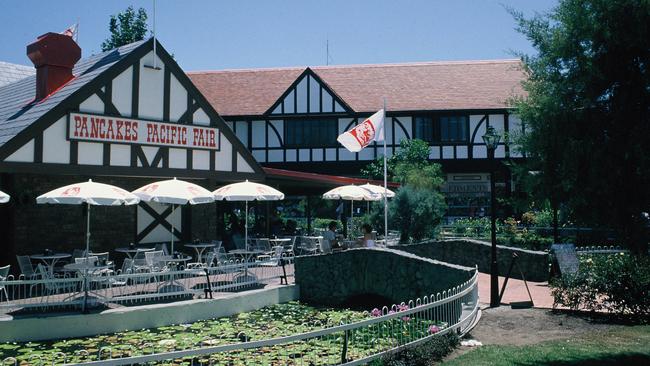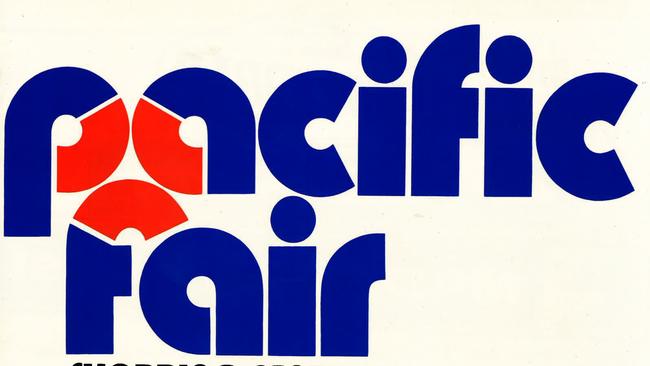Flashback: Iconic Gold Coast shopping centre Pacific Fair celebrates 40 years since opening
ONE of the Gold Coast’s most famous shopping centres turns 40 today. So how did Pacific Fair get built and how did Disneyland inspire it? This is the story of how a swamp became a shopping mecca.
Gold Coast
Don't miss out on the headlines from Gold Coast. Followed categories will be added to My News.
FROM Tee-pees to pink lotus flowers to a modern shopping centre, Pacific Fair has gone through some dramatic changes in its lifetime.
Today is its 40th anniversary but the dream that became one of the Gold Coast’s most famous shopping destinations was conceived more than 50 years ago.
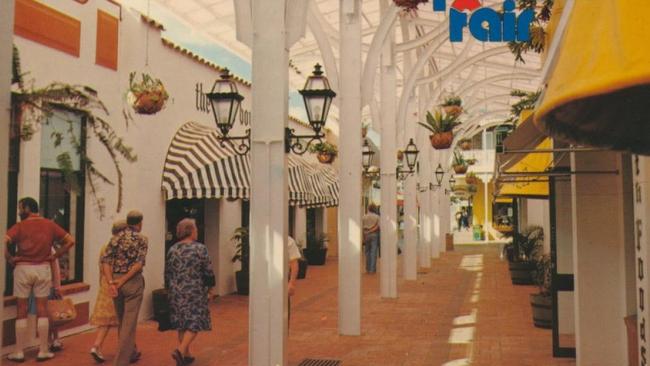
Plans for Pacific Fair were first drawn up in 1963, but planning was put on hold through the late 1960s.
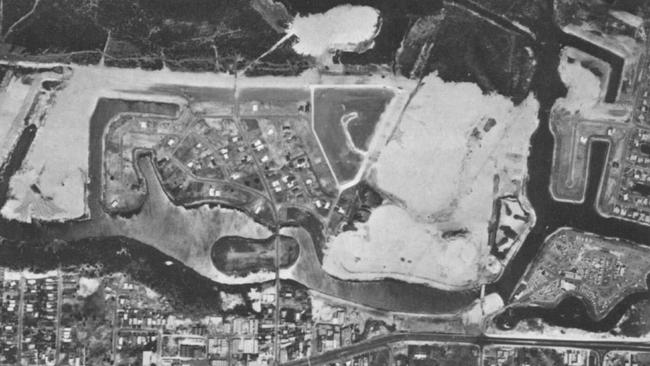
Things kicked into high gear in 1970 after the opening of what was then Queensland’s largest shopping centre, Southport’s Sundale in 1968.
McDonnell and East named the initial anchor tenants, followed by Coles and Kmart in December 1975.

The latter two continue to operate in the centre today.
The site in mind was a “dreary swamp land” bordering Little Tallebudgera Creek canal near the Broadbeach Lennons Hotel.
Hooker Retail Developments was the company responsible for the centre, which was designed by the company’s English-born state manager, John C. Barrett and architect “Big” Bill Job.
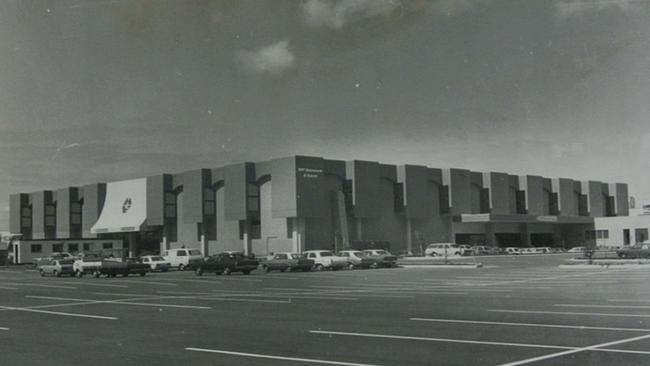
Mr Job spent two months in the US, Canada, Sweden and the UK to inspect cutting edge shopping centres and admitted the final design was heavily inspired by Disneyland.
Hooker Initially planned for the 70s-era centre to simply be the first stage of a larger development, something which would eventually be realised in coming years.
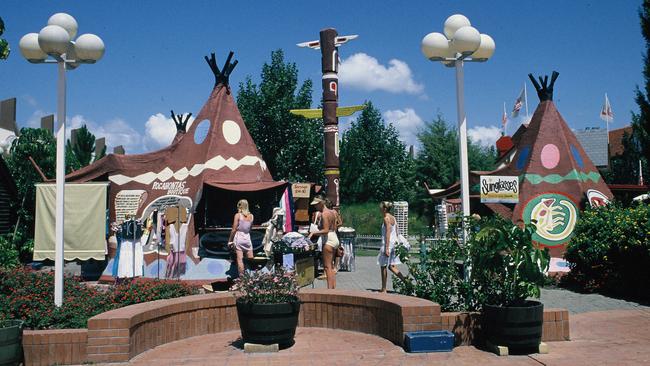
“The imaginative design of the centre, from its chlorinated lakes to its paved walkways immediately sets shoppers at their ease,” Mr Barrett told the Bulletin in 1976.
“We spent about 16 weeks putting special brick paving throughout the centre.
“Not only does it look good but it’s cool on the feet of shoppers who can’t be bothered wearing shoes.
In its initial configuration, the centre was spread over 16.6ha and was expected to attract shoppers and tourists from as far away as Ipswich and Murwillumbah.
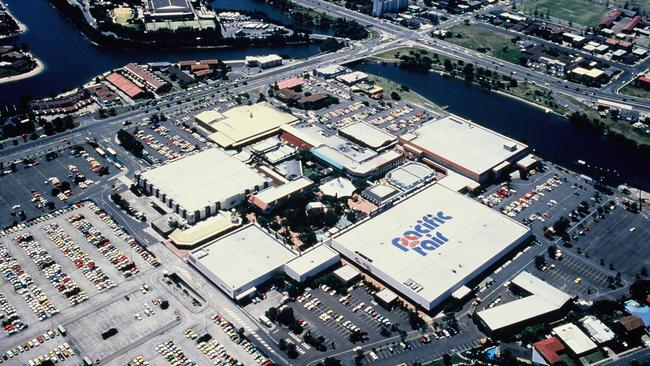
It had around 3000 car spaces and was initially managed by Brisbane-born retired World War II Commando Bob Mallon.
McDonnell and East’s Pacific Fair shop was marketed as “space-age retailing”, becoming the state’s first fully computerised department store and among six in the entire country.
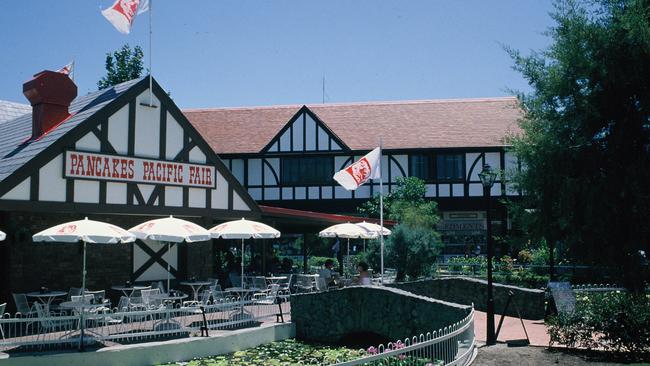
It was described as a “marriage between advanced computer technology and a new retail venture.
The shopping centre was split into multiple zones hearkening back to different parts of the world.
Among those was Regent Street, filled with mock-Tudor architecture to celebrate “Merry Olde England”. It featured a chemist, bookshop and eateries as well as executive suites.

The Concourse was Pacific Fair’s main thoroughfare and still exists today, featuring Kmart, which remains in its original location, the Coles New World supermarket and “the Indian Village” which featured tee-pee inspired shops.
The Central Lake included seafood restaurants while the French Quarter was full of “charming shops and quaint kiosks built around a fountain and Basin Street was a New Orleans-inspired American zone.
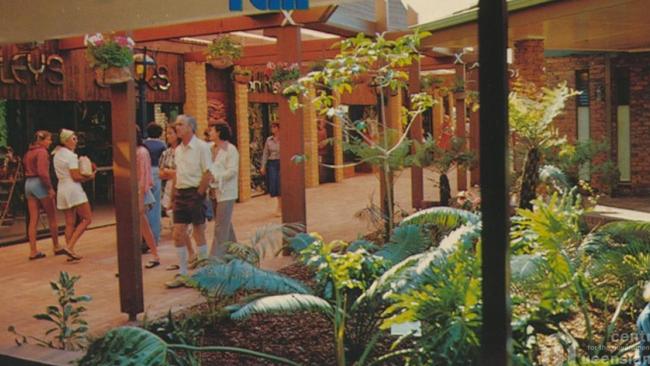
Other ones included Waimanu Place, a Pacific Island-theme zone, the European-inspired Linden Strasse and the Australian Colonial area.
The centre proved to be a huge success and welcomed big crowds in its early years, necessitating an expansion.
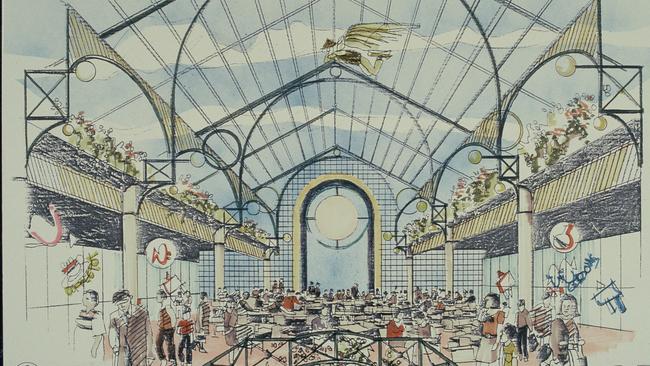
In 1982, the centre expanded to include a Myer, it relocated and enlarged its Coles, and added another 32 specialty stores.
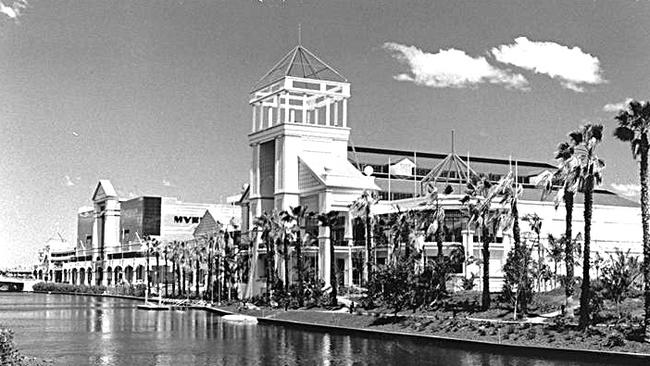
The early ’90s were a busy time for the centre which saw the addition of a “village”, California Ave, a four-level Myer, 50 specialty stores, a 700sq m expansion to Coles and a fresh-food marketplace.
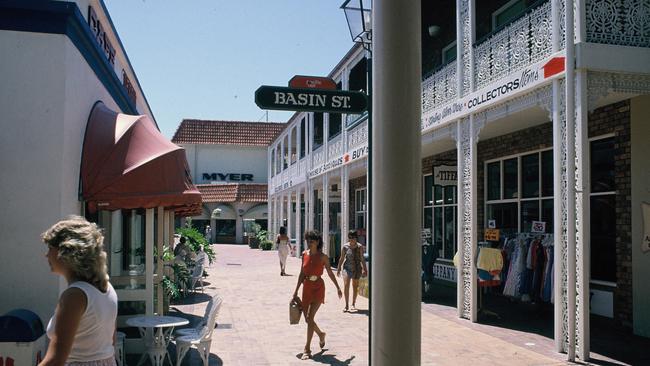
Eventually the old Myer building was converted to a two-level enclosed mall which was opened in October 1992.
Two years later, the McDonnell & East store ceased trading, and Target and Toys R Us took over the area some time later.
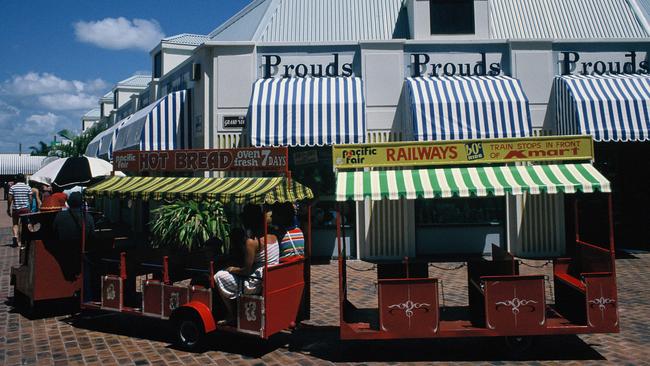
In 1996, the marketplace name was changed to Westside, and the Birch Carroll and Coyle Senstadium 12-theatre cinemas opened in March the following year.
The first film screened was the special-edition re-release of Star Wars.

In late 1998, Daimaru opened a 14,000sq m store to much fanfare but the chain later withdrew from the Australian market and ceased trading in 2002.
The area was reconfigured to accommodate 22 new stores.
In 2007, owners AMP Capital Retail Trust, the AMP Capital Shopping Centre Fund and the AMP Capital Diversified Property Fund lodged a DA application to increase Pacific Fair by 40,000sq m, however the global financial crisis put the project on hold for more than five years.
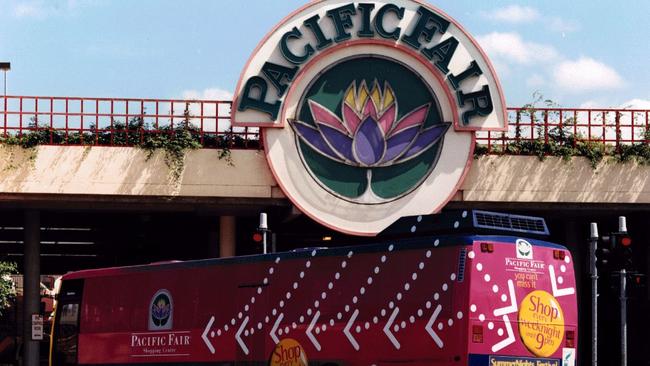
The redevelopment was finally approved in 2014, with more than $670 million spend to modernise the centre.
The work was completed last year, 40 years after construction began.
